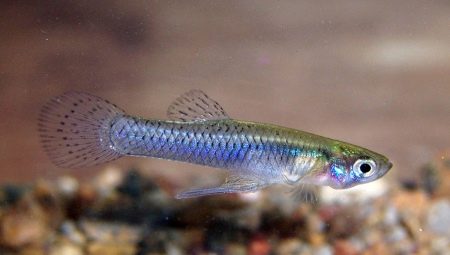Those who have chosen fish as pets and have recently acquired an aquarium should first “train” in ordinary gambusia (or, as they are also called, affinis). Despite the fact that the owners of aquariums do not favor this fish because of its not very expressive appearance, care for it is so minimal that even a beginner can cope with it: it is undemanding in terms of temperature and water quality, as well as the type of food.
Habitat in nature
In total, in nature there are more than 40 species of gambusia. It lives mainly in fresh water, but it can survive in a slightly salted environment. It can be natural and man-made lakes, ponds, estuaries and even roadside puddles. The fish lives mainly near the coast, in the upper layers of the water, and feels equally comfortable both in bodies of water with standing water, and in fast streams.
According to some sources of information, initially, the regions of South and North America were considered the birthplace of gambusia.
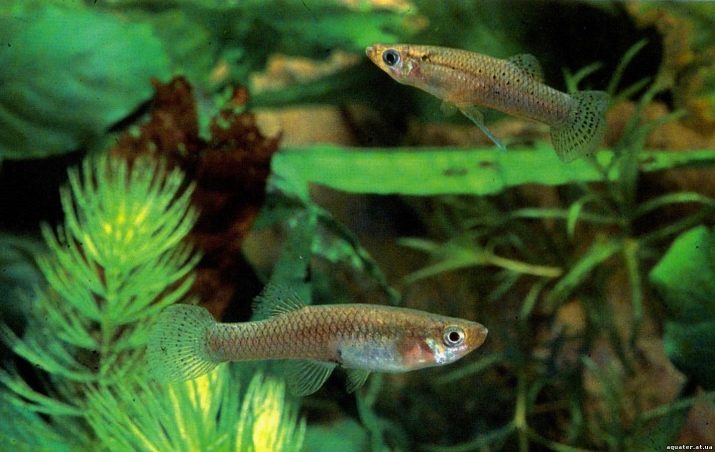
Also, certain species of this fish live in some southern countries of Europe, in China, Japan, Central Asia. Later, ordinary gambusia was introduced into the Transcaucasus (including the Krasnodar Territory).
They were specially acclimatized to combat malaria mosquitoes and the larvae of other insects that carry yellow fever. In one day, one affinis eats up to one hundred mosquito larvae, thereby stopping the spread of the infection. For this, the fish was even awarded a bronze monument.Several of these pedestals are installed in some southern regions around the world, in particular: in Israel, in the distant Corsica, and even in Russia in Adler.
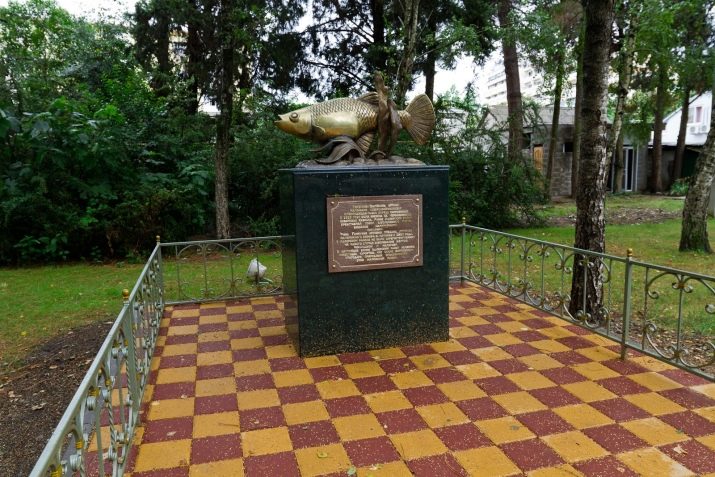
Gambusia is a thermophilic fish, therefore its reproduction in the northern regions is impossible.
But in Australia, for example, common gambusia began to breed too actively and exterminated several other species of fish, which led to an imbalance in the ecosystem. Therefore at the government level a decision was made to ban the cultivation and sale of gambusia.
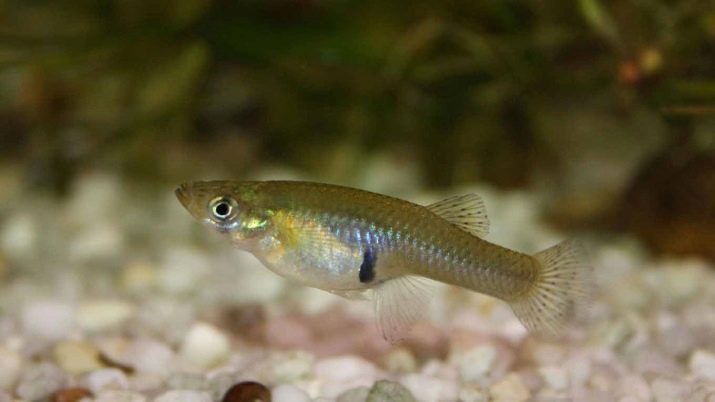
Description of Gambusia
The gambusia has a strong cylindrical body with large scales, the back above the fin is slightly curved upwards, the head is large, the eyes are bulging, they can have a different shade: from gray to greenish-blue, and sometimes black. Lateral fins have a yellowish tint, sometimes with dark spots.
The mouth is not too expressive, but with a lot of teeth. The tail is long and flat, with a rounded fin.
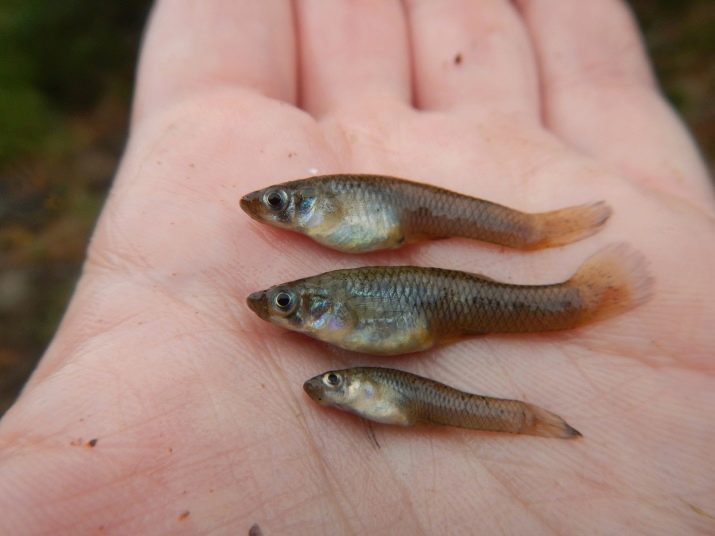
Male from female can be distinguished by body size and color. In males, the body length is not more than 3-5 cm, the color of the scales is silver-gray, with several black spots. Females are slightly longer than males: their size is about 6–7 cm. The color of the female is also gray, but less bright, with a greenish tint. In addition, in females, under the eyes, you can see two small dark spots, the color of which can change to orange and even yellow, depending on the environment and the level of melanin.
Content
In nature, these fish can withstand significant changes in water temperature up to 10-15 degrees, at home, the optimal indicator is considered to be 17-25 degrees. When the temperature drops (below 12 degrees), the fish goes to the bottom, buries itself in sand or soil and falls into hibernation.
Despite the fact that gambusia can withstand a large concentration of salt in water, the solution for the aquarium should first be prepared: water must be defended for several days and add coarse salt (table or sea), observing the proportion of 5 g of substance per 1 liter of water.
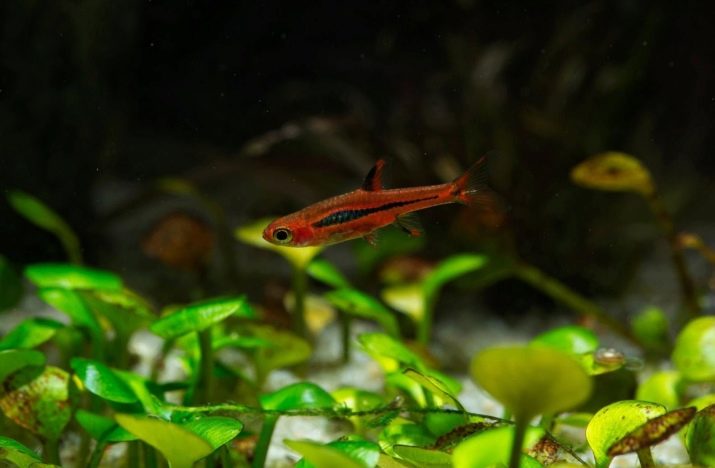
As for food, there are also no special requirements.
Gambusia not only eats special dry mixes for aquarium fish, but also with pleasure consumes bloodworms, mosquito larvae and other insects caught in a nearby pond. She can also eat large-leaved plants. Gambusia can be given and fillet of low-fat fish, beef. To make the fish feel better, it is recommended to alternate dry and vegetable food.
On average, Gambusia live for about two years. Females can live a little longer than males. Pets do not need a lot of space to feel normal. To obtain offspring a pair of gambusia is enough 10-liter capacity with water.
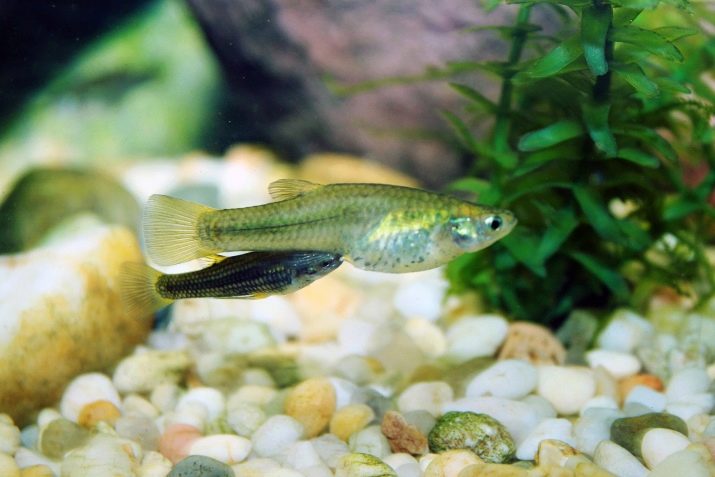
To maintain a larger number of individuals, it is necessary to choose an aquarium more spacious - about 40-50 liters.
Affinis fish perfectly adapts not only to cramped space, but also to poor water quality and extremely minimal oxygen content in it. The remaining requirements for their maintenance are simple:
- water hardness (dH) should be in the range of 8 ′ to 30 ′;
- acidity (dH) must be maintained between 7′ – 8.5 ′;
- replace about 15–20% of the water in the aquarium once a week;
- regularly clean the soil with a siphon;
- the lighting of the aquarium should be moderate, but it cannot be completely ruled out: a lack of light can develop vitamin deficiency and reduce the ability to reproduce;
- the vegetation in the aquarium should be with large hard leaves and a solid stem - the less durable flora is eaten by the fish.
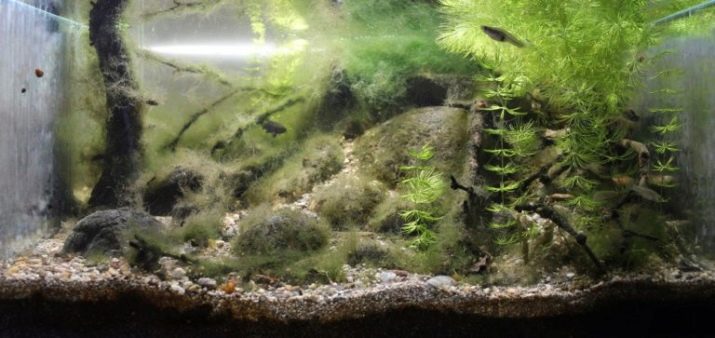
For soil, you can use small sea or river pebbles, as well as medium-sized sand. It is impossible to cover the aquarium with glass or a lid - the inhabitants must receive sufficient oxygen.
Compatible with other aquarium inhabitants
Gambusia in nature live in whole flocks, preferring a dynamic lifestyle.They have an aggressive disposition, so placing them in the same pool with other fish is highly undesirable.
Gambusia attack their relatives, especially those who are inherently inactive, as well as owners of long fins, which immediately gnaw the gamboos and inflict all kinds of injuries on the relatives.
It is especially dangerous to keep goldfish and guppies together with gambusia. But the fiery and Sumatran barbs, as well as cardinal fish, get along well with affinises.
If the gambusia is very frightened of something, it will hide in the ground from fear and can even change the floor for a while (two to three weeks).

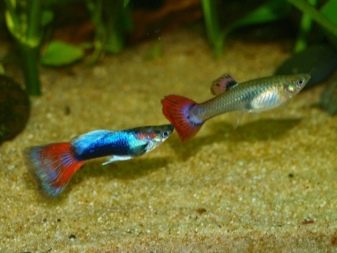
Breeding
These fish are viviparous and breed well in artificial conditions. They begin to give birth at two months of age. In nature, the spawning season for gambusia begins in the spring (usually March-April) and ends in late autumn (in November). Over the course of these months, one female can have offspring up to 6 times. During one pregnancy, 2-3 dozen fry are born. If you consider that the pregnancy of gambusia lasts three weeks, then for half a year one female can bring a huge amount of offspring.
To get healthy offspring, no more than 3-4 females should be kept with one male.

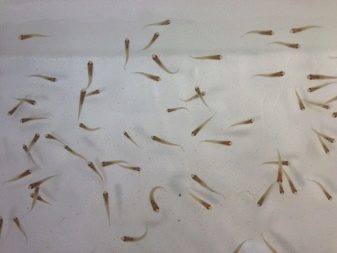
For the entire period of pregnancy, the female must be relocated to a separate container, as she can experience stress from the attention of males and, as a result, delay delivery. And when she gives birth, fry should also be isolated from their parents, since this breed of fish tends to eat its offspring.
The first two weeks, newborn gambusia eat live dust, and after 14 days are ready to eat adult food. Young fry can also be given chopped vegetable flakes, chopped boiled chicken protein or cottage cheese.
For live-bearing gambusia fish, see below.
